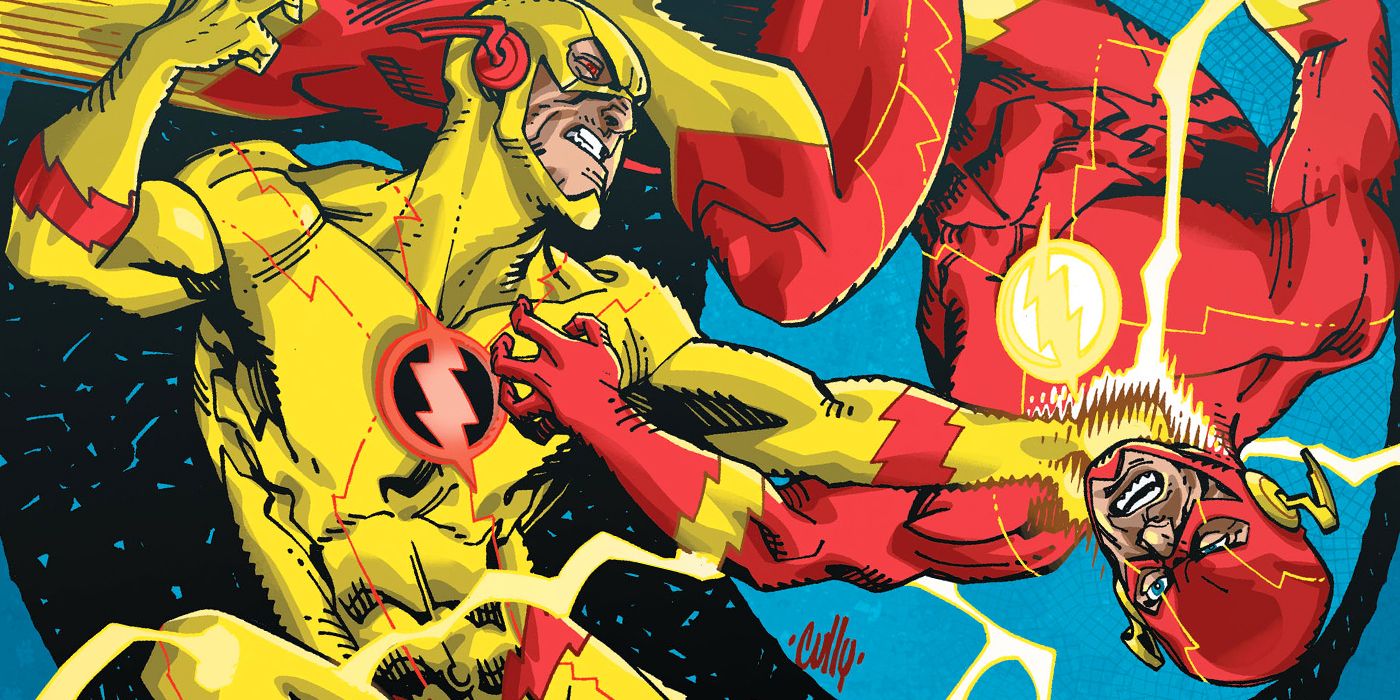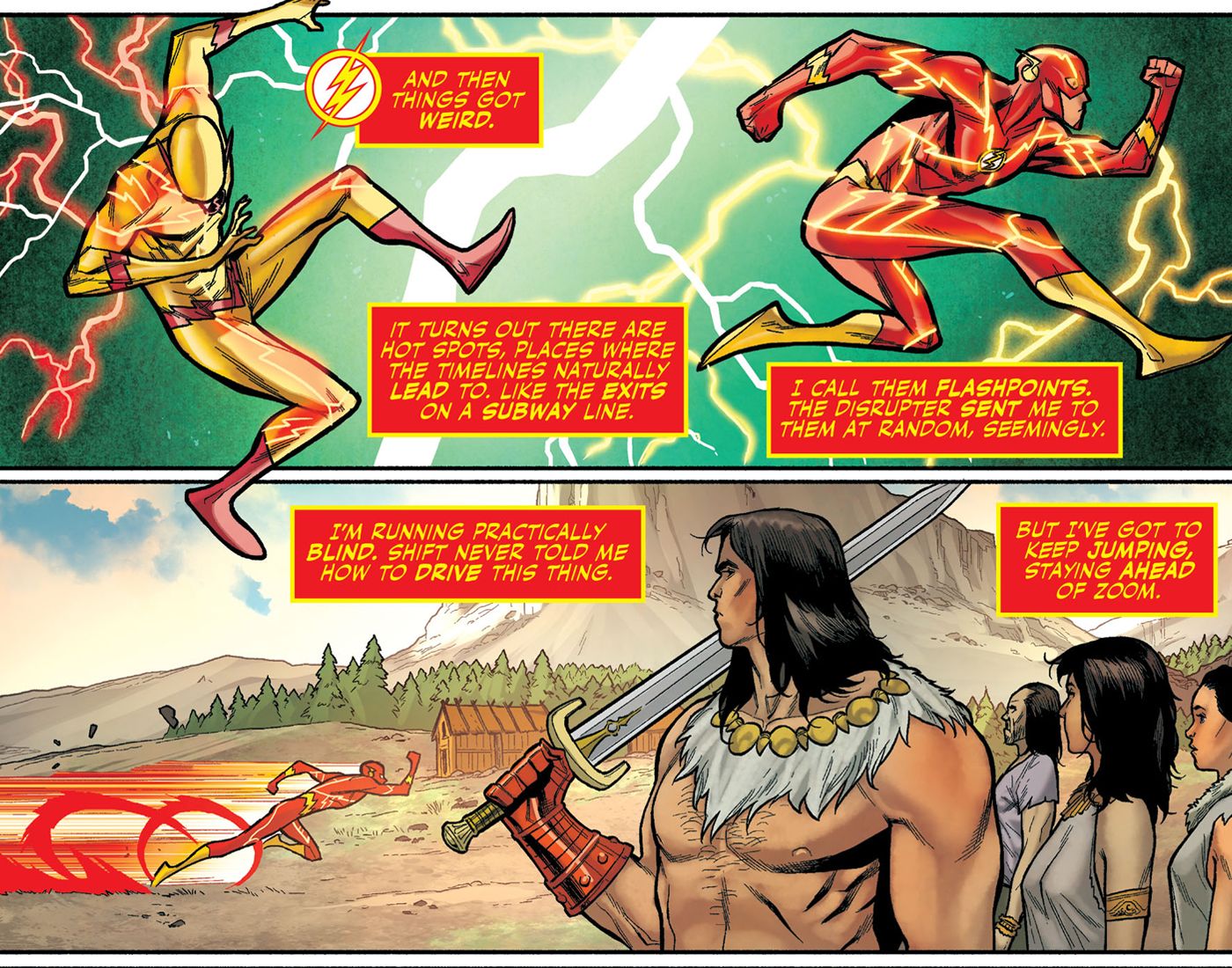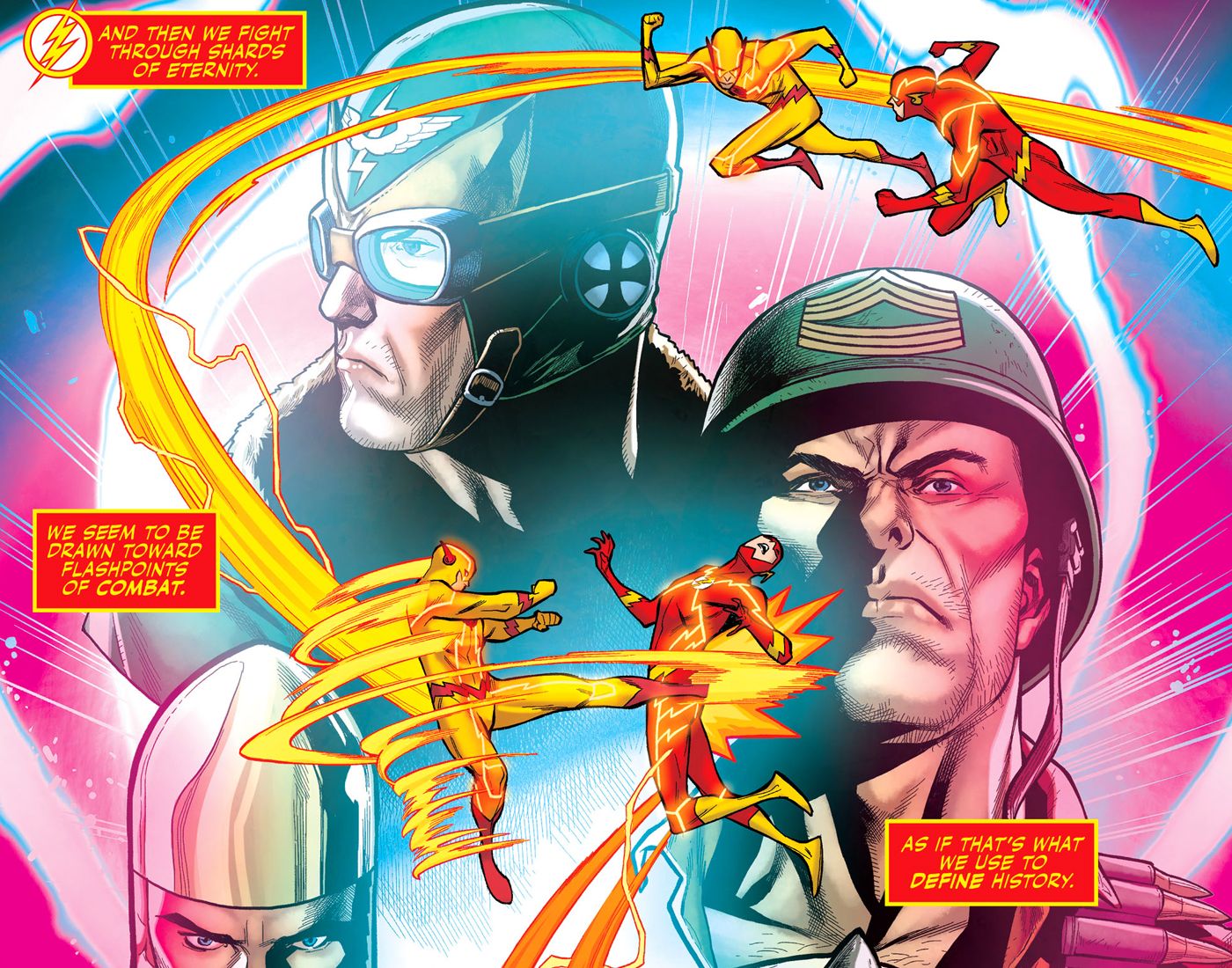WARNING: The following contains spoilers for The Flash: Fastest Man Alive #5, by Gail Simone, Clayton Henry, Marcelo Maiolo and Rob Leigh, available now.
In the DC Universe, "flashpoint" is a loaded word. Usually, it's in reference to Flashpoint, the 2011 Geoff Johns and Andy Kubert DC crossover that saw the Flash create an alternate timeline by changing history to save his mother from being killed by the Reverse-Flash. That storyline has been adapted in the Arrowverse and in the DC animated film, Justice League: Flashpoint Paradox.
However, The Flash: Fastest Man Alive #5 brings another kind of flashpoint into its self-contained version of the DC Universe. In this digital-first series, Barry Allen introduces the idea of flashpoints as being specific eras in history that serve as natural exits from the timeline.
Over the past few issues, this series has chronicled the first encounter between this Flash and Reverse-Flash, Eobard Thawne. After traveling into Thawne's future last issue, this issue sees the Reverse-Flash chase Barry Allen across time and space.
In this issue, the Flash’s jump across time led him to encounter none other than Jonah Hex, DC’s western scarred antihero. However, the Flash isn’t given much time to get to know the scarred bounty hunter before the Reverse-Flash shows up. This version of Thawne is an authoritarian dictator who takes his inspiration from the Flash.
As Barry Allen fights his foe across the timestream, Barry Allen reaches a speculative hypothesis that serves as the basis of his flashpoint theory. He believes that are natural hot spots in the DC Universe where timelines will naturally lead to, which he compares to exits on a subway line. While this might seem like an interesting sidenote at first glance, it provides a compelling explanation for why certain characters and certain eras of DC history seem to pop up so much in time-travel tales.
This definition of Flashpoint explains Jonah Hex’s cameo appearance in the issue, along with the cameos of Kamandi the Last Boy in the Last in the future, Enemy Ace in World War I, Sgt. Rock in World War II and various other DC characters specific to certain time periods. While the history and future of the DC Universe has no shortage of eras that can be visited, time travel tales usually end up in these kinds of locations because the timeline naturally bends in their direction.
Barry Allen's flashpoint theory could also give an in-universe reason as to why these periods are relatively unchanged by DC's assorted reboots. If these moments in time are so important to the greater timeline, that could provide them with some protection from the greater effects of DC's reality-shaking stories.
While 2011's Flashpoint changed the reality of the DC Universe as we know it, Barry Allen's theory about flashpoints in the timeline could change our understanding of how time travel operates in the DCU.



